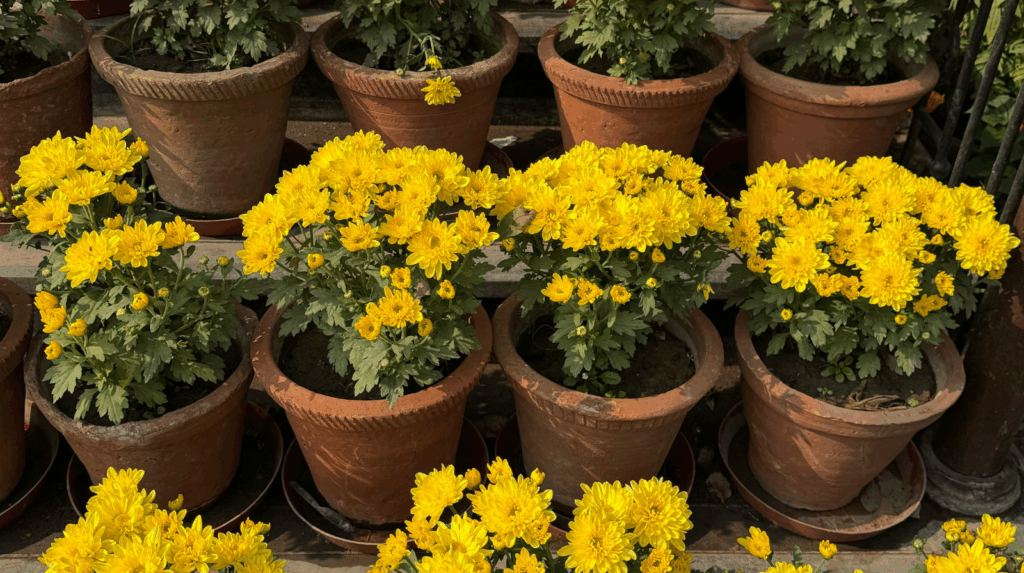
Best Soil Mix for Container Gardening” — yellow chrysanthemums growing in terracotta pots show how healthy soil supports strong, lasting blooms.
Why Container Size Matters
Choosing the right pot isn’t just about looks — it’s about creating the right environment for your plants to thrive. The container you choose directly affects root growth, watering habits, and overall productivity. A pot that’s too small limits root expansion and dries out quickly, while one that’s too large can trap excess moisture, leading to rot or nutrient imbalance.
In container gardening, size equals balance: the right volume of soil holds enough water and nutrients without suffocating roots. This means your pot choice determines how well your plant develops — from strong, efficient roots to healthy foliage and blooms.
By the end of this guide, you’ll know how to match container size, depth, and material to your plants’ specific needs — whether you’re growing herbs, leafy greens, or deep-rooted vegetables.
Key Principles for Pot Size Selection
Don’t go too big or too small
The most common mistake in container gardening is assuming that a bigger pot is always better. It’s not. When a pot is too small, roots become cramped (root-bound), restricting growth and causing the soil to dry out too quickly. On the other hand, when the pot is too large, excess soil retains more water than the plant can use, increasing the risk of root rot and nutrient imbalance.
According to Hortology’s complete guide to planting houseplants in pots and planters, pot size directly influences root aeration and drainage balance — choosing the correct dimensions helps maintain healthy growth and moisture control.
A good rule of thumb — and one of the most practical repotting tips — is to move up only one size at a time, typically about (2–5 cm) wider in diameter than the current pot. This allows roots to expand gradually into fresh soil without overwhelming the plant.
Depth matters
Depth isn’t just a detail — it’s crucial. Plants with deep root systems, such as tomatoes, carrots, or potatoes, require containers (30–45 cm) deep to allow proper root penetration. Shallow-rooted plants like herbs, succulents, or lettuces prefer shallower pots around (15–20 cm), where soil stays evenly moist without becoming waterlogged.
Root-ball check
Not sure when to size up? Look at the roots. If they’re circling the pot or pressing tightly against the sides, your plant is root-bound and ready for a larger home. This simple visual check helps prevent stress and ensures continuous, healthy growth. When choosing a new pot, size it for root space — not plant height.
Step-by-Step Guide to Choosing the Right Pot
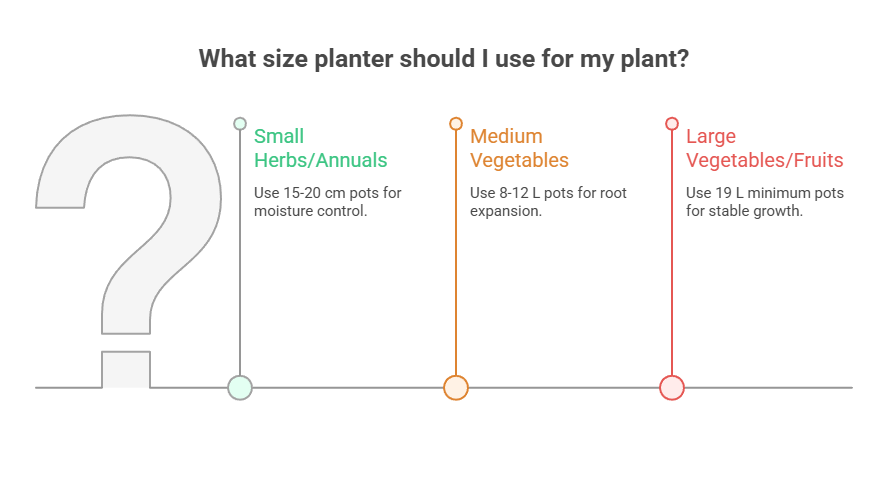
1. Check your plant’s current size
Before changing containers, assess your plant’s existing pot. If you notice roots circling the edges or pushing through drainage holes, it’s root-bound — a clear sign it needs more room. The best approach is to size up slightly, moving to a container about (2–5 cm) wider in diameter than the current one. This gradual increase helps the plant adjust without shocking its root system.
2. Understand your plant’s mature size
Pot size should always reflect your plant’s expected adult form, not its current one. A small seedling might look comfortable in a small pot now, but roots expand fast once growth accelerates.
Here’s a quick guide for sizing:
- Small herbs and annuals: (15–20 cm) pots usually suffice.
- Medium bushy vegetables like peppers or beans: (8–12 L) pots.
- Large vegetables and fruiting plants such as tomatoes, squash, or eggplant: 19 L minimum.
How do you know what size planter to use?
Match the container to your plant’s root and foliage size — small plants need tighter spaces for moisture control, while large ones demand depth and volume for stable growth.
3. Match depth to root type
Root depth determines how well your plant can access water and nutrients.
- Deep-rooted crops like tomatoes, carrots, or potatoes require (30–45 cm) of soil depth for proper root development.
- Shallow-rooted varieties such as lettuce, arugula, and most herbs thrive in (15–20 cm) containers where moisture remains more consistent.
4. Decide how many plants per pot
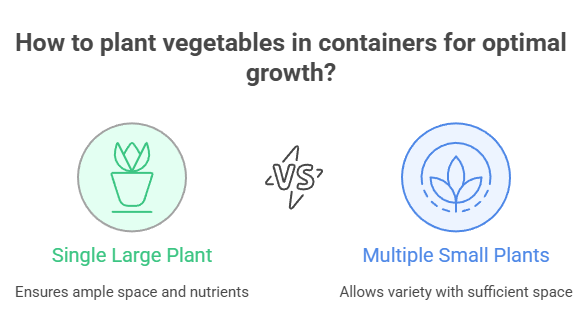
Avoid overcrowding. As a rule, plant one large vegetable or bush per container to give roots full access to space and nutrients. You can, however, grow multiple smaller plants, such as herbs or leafy greens, together — just ensure there’s enough surface area and root depth for each.
Do container plants need drainage?
Yes. Without holes, water builds up, suffocates roots, and triggers rot.
Material & Drainage: The Hidden Factors
Every good container garden starts with proper drainage. Regardless of the pot’s size, it must have drainage holes to let excess water escape. Roots need oxygen as much as they need moisture, and poor drainage quickly leads to soggy, unhealthy soil.
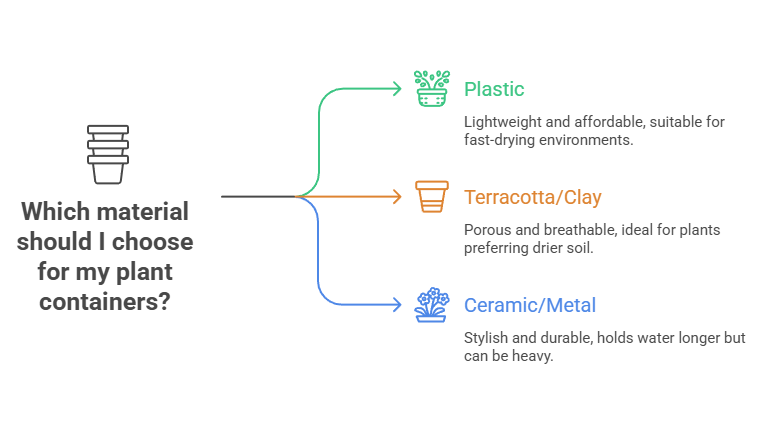
Choosing the right material:
- Plastic: Lightweight and affordable; retains moisture well, making it suitable for fast-drying environments.
- Terracotta or clay: Porous and breathable; ideal for plants that prefer drier soil, but they dry out faster and may need more frequent watering.
- Ceramic or metal: Stylish and durable; they hold water slightly longer but can be heavy and less practical for large containers.
While materials affect moisture control, they don’t change the sizing rules — a tomato plant still needs the same 19L minimum whether it’s in plastic or terracotta. The key is to pick what suits your watering habits, climate, and aesthetic.
Sample Vegetable Container Size Chart
Use this quick reference chart to match your vegetables with the right container volume and depth. These are minimum size guidelines — larger containers can improve root space and stability, but they also retain more water, so monitor moisture carefully.
| Plant | Minimum Pot Volume | Minimum Depth |
|---|---|---|
| Arugula | 2L | 15-20 cm |
| Bush Beans | 8L | 20-25 cm |
| Tomatoes | 19L | 45-60 cm |
| Peppers | 11L | 30-45 cm |
| Carrots | 19L | 30-45 cm |
| Lettuce | 8L | 15-20 cm |
| Squash | 20-27L | 45-60 cm |
| Radishes | 8L | 15-20 cm |
Note: These are minimum recommendations. A slightly bigger container provides more buffer for watering and nutrient stability — just make sure drainage remains effective.
Quick Reference: How to Know When to Repot
Knowing when to move your plant into a larger pot prevents stress and root damage. Watch for these clear signs:
- Roots circling or poking through drainage holes. The plant has outgrown its space.
- Slower growth despite proper watering and feeding. Roots may be restricted or soil depleted.
- Water drains too quickly or pools on top. Indicates compacted or degraded soil structure.
- Plant becomes top-heavy or tips easily. The root system can no longer anchor it properly.
Tip: When in doubt, gently lift the plant from its pot — if you see dense root mats or spirals, it’s time to size up.
Special Cases & Exceptions
Not every plant follows the standard sizing rules — some require tailored conditions for optimal growth.
- Succulents & cacti: These thrive in small, shallow pots with excellent drainage. Too much soil traps moisture, leading to rot.
- Fast growers (like mint): Rapid root spread means they may need frequent upsizing or root trimming to stay healthy.
- Hanging or railing planters: Always account for weight and water retention — wet soil can double the load, and lightweight materials help prevent structural strain.
When growing on balconies, test stability after watering to ensure safety and prevent tipping.
Common Mistakes to Avoid
Even experienced gardeners sometimes misjudge container size. Avoid these frequent errors:
- Using oversized pots “for future growth”: Too much unused soil stays wet, increasing the risk of root rot.
- Skipping drainage holes: Without them, even the best mix becomes waterlogged.
- Crowding large plants together: Each large vegetable (like tomato or squash) needs its own container for root space and airflow.
- Ignoring weight limits on balconies or shelves: Always check the load-bearing capacity before filling multiple large pots with soil and water.
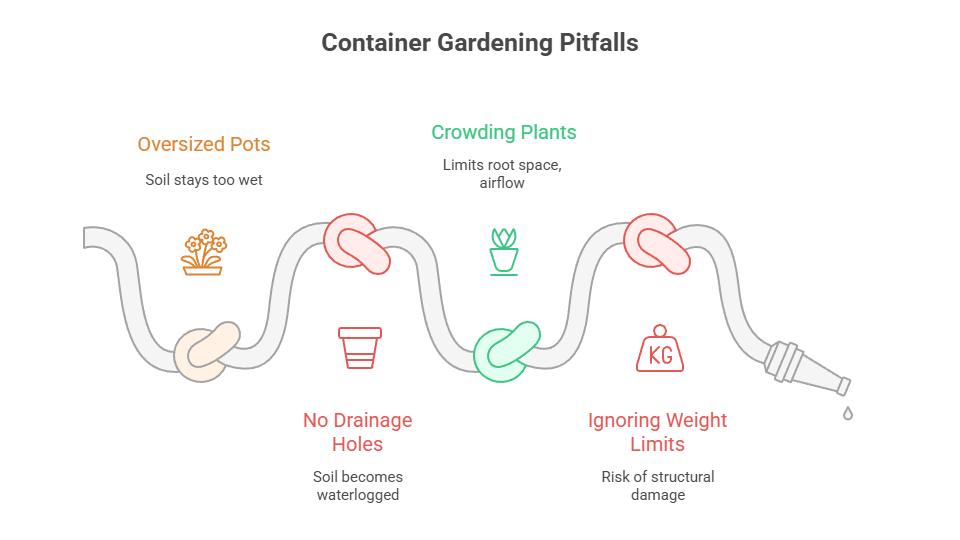
Start with appropriately sized containers, prioritize drainage, and expand gradually — healthy roots thrive in the right amount of space, not the most space.
Final Thoughts & Takeaways: Size It Right for Success
Choosing the right container size isn’t about appearance — it’s about plant health, stability, and yield. A pot that fits your plant’s root system ensures proper moisture balance, nutrient flow, and long-term growth.
Start small, observe how your plants respond, and scale up as needed. Over time, you’ll develop an instinct for what each plant prefers.
Before your next planting session, check your container sizes — the right fit makes all the difference.
FAQ: Choosing Container Sizes
How much space do roots really need?
Most plants need at least (5–8 cm) of extra room around their root ball to grow freely. Shallow-rooted plants like herbs and lettuce need less depth, while deep-rooted ones like tomatoes or carrots need extra space to expand vertically.
Can I use deep pots for shallow-root plants?
You can, but it’s not ideal. Excess soil in deep pots retains water the roots won’t reach, leading to soggy conditions and potential rot. Match pot depth to the root type for better drainage and balance.
How do I know if my plant is root-bound?
Check for roots circling the pot’s edges or poking through the drainage holes. Slowed growth and quick-drying soil are also clear signs it’s time to move up one pot size.
Does pot shape matter?
Yes — tall, narrow pots suit deep-rooted plants, while wide, shallow ones are best for herbs, succulents, and greens. Shape influences both stability and drainage.
How often should I upsize containers?
Most houseplants and vegetables need repotting every 1–2 years. If growth slows or the pot dries out unusually fast, it’s time to give the roots more room.
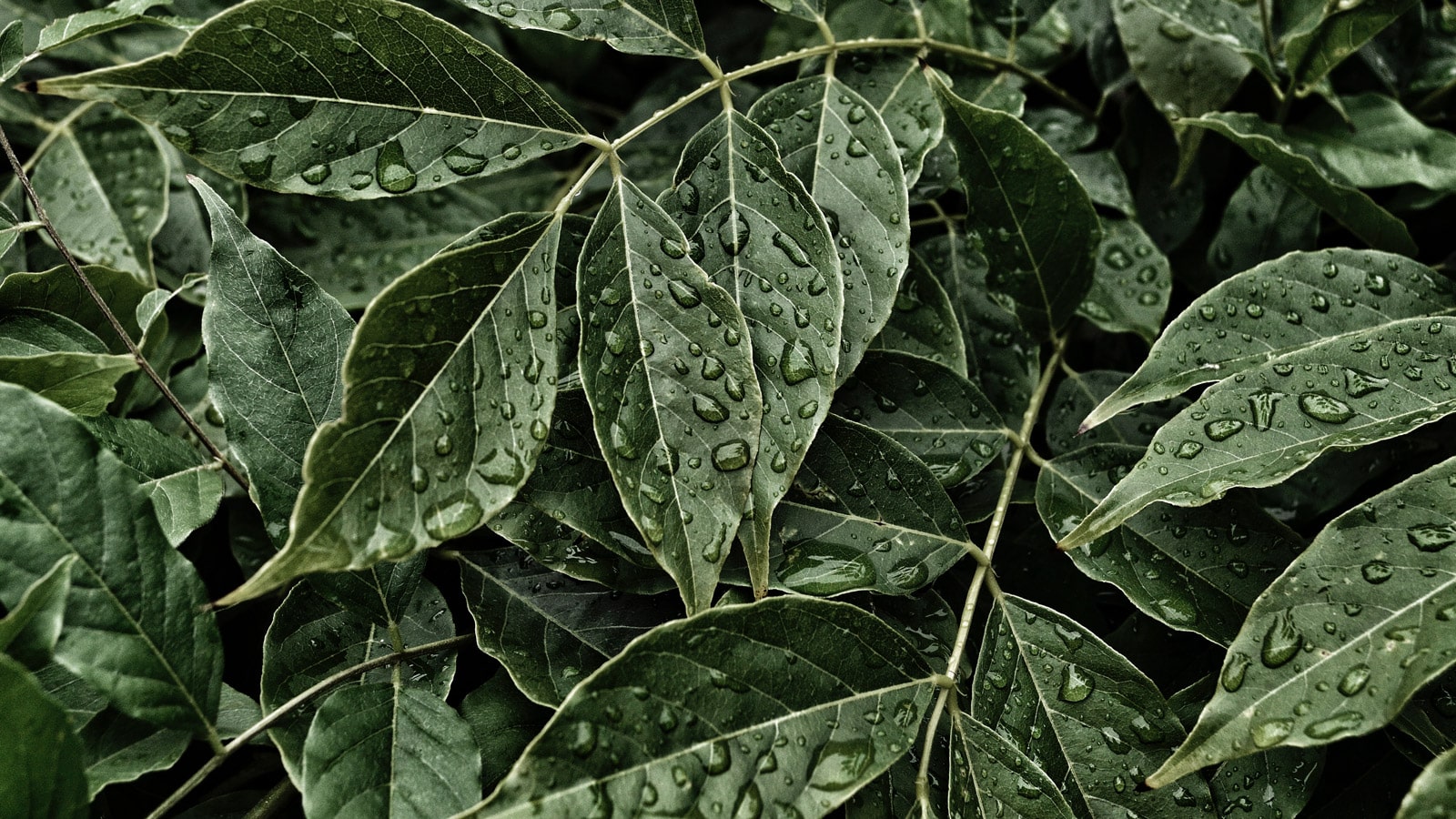
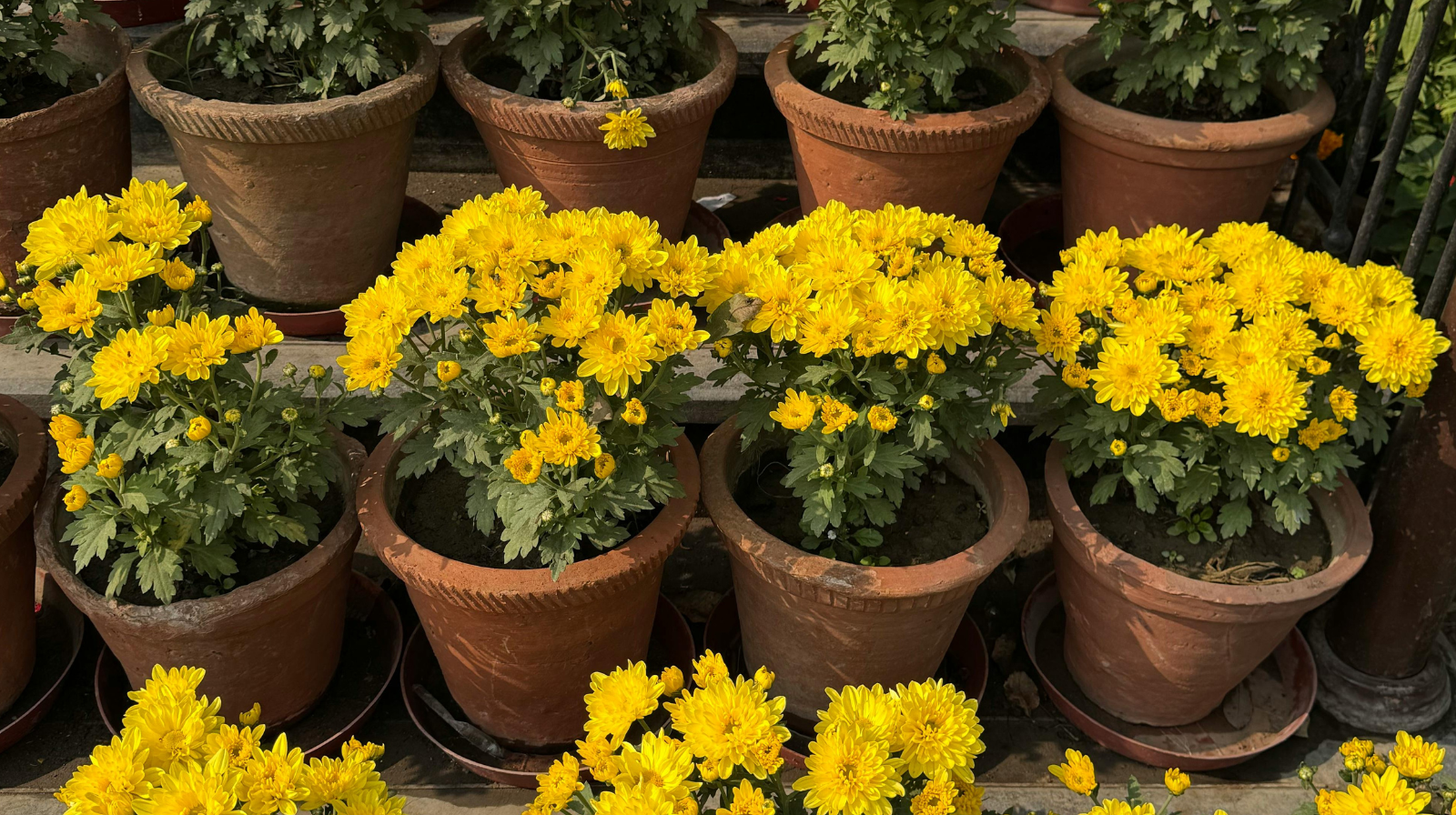


Leave a Reply